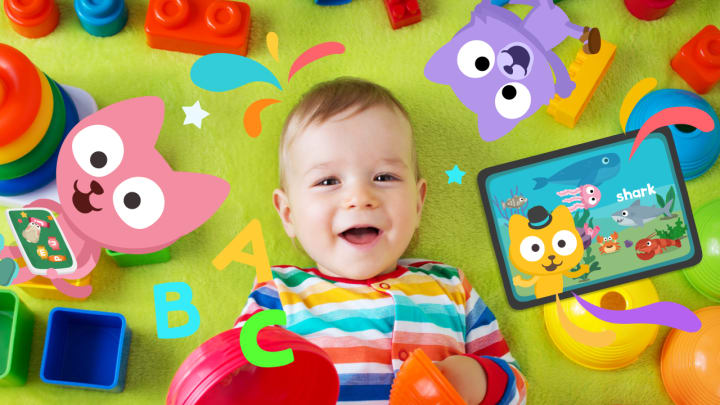Top Benefits of Using a Children English Language iOS App for Early Learners

children english language ios app options aren’t all equal—some are just noisy toys, some are magic. The one that stuck for my little learners (and my own kid) felt like play first, lesson second. If you’re curious, a solid pick is the children english language ios app I’ve used in real classrooms and at home. It’s bright, silly, structured—just enough. And yeah, it works.
Interactive learning in a children English language iOS app
children english language ios app design matters because early learners live in motion. Tap, drag, burst a balloon, feed a panda, sing a line—tiny actions anchor new words. I’ve watched four-year-olds lock in on “red” or “banana” because the game makes the word do something. Not a worksheet. A thing that moves and squeaks back. When you keep hands busy, brains come along for the ride.
Immersive speaking in an English app for kids
children english language ios app learning works best when there’s less translating and more hearing–saying–hearing again. Kids don’t need grammar lectures; they need voices, songs, and little prompts that nudge speech. Short call-and-response moments train ears first, then mouths. I like apps that sprinkle in chants and songs—music sticks. Words hide inside melody and rhythm and suddenly they’re saying “I like apples” without thinking how.
Android gains with a kids English language Android app
kids english language android app access means the learning doesn’t split by device. Same games, same voices, same topics—animals, colors, numbers, food, daily routines—whether you’re on Dad’s Samsung or Mom’s iPad. Consistency matters. Kids don’t care about platforms; they care that the frog still ribbits when they tap it. Keep the experience familiar and they’ll come back tomorrow.
Short sessions in a children’s English iOS learning routine
children english language ios app routines work when they fit kid time—five to ten minutes, tops. Burstiness beats marathons. I set a simple rhythm: one or two mini-games after breakfast, one song before dinner. That’s it. Gains are sneaky this way. You’ll hear new words show up at bath time. At the grocery store. In the car. Language doesn’t arrive as a lesson; it leaks into everything.
Play-based phonics in an English language app for children
children english language ios app features I look for: visual phonics cues, clear native audio, and chances to repeat out loud without pressure. If a game celebrates near-misses—and doesn’t scold—kids try again. That tiny loop builds pronunciation muscle memory. Pair that with topic-based vocabulary (pets, body, weather, feelings) and you’ve got practical language kids actually use with you.
Offline, ad-free English app for kids on the go
children english language ios app safety isn’t negotiable. No ads, no random pop-ups, no weird links. Also, offline mode is huge. I’ve done whole flights with nothing but a sticker pack and a download button. When you can preload lessons, learning follows you—doctor’s offices, grandma’s sofa, those long waits where time stretches forever.
Parent-friendly English learning app features for children
children english language ios app setups should be “open and go.” Clear paths, gentle leveling, and visible progress—stars, badges, topic maps. You don’t need a linguistic toolkit; you need a way to peek at what stuck today. I love when I can see that foods and colors are strong, but weather needs another pass. That little snapshot helps me mirror words in real life: “Blue cup? Sunny day!” Micro-reps at home cement the app’s wins.
Teacher-designed kids English app curriculum that sticks
children english language ios app content built with early childhood educators just… feels different. Pacing is kinder. Games escalate in tiny steps. New sounds arrive in friendly pairs. You’ll notice topics flow in a child logic way: pets before planets, feelings before future tense. That’s not random. It’s developmentally smart, and it keeps confidence high—which keeps motivation high—which keeps the habit alive.
Real-life story using a children English iOS app
children english language ios app routines saved my Tuesday once. My five-year-old student—loud, hilarious, allergic to sitting—knocked his juice onto the carpet mid-lesson. Chaos. I almost called it. But he grabbed the tablet, opened the animal game we’d been using all week, and out popped “I see a lion… I like lion.” Not perfect grammar. Perfect courage. We mopped while he kept naming animals between giggles. Messy room, tidy win. I’ll take it.
From play to speaking in an English app for shy kids
children english language ios app activities can be a bridge for the quiet ones. The screen asks first, softly—repeat after me, tap to hear it again, try it your way. No spotlight. After a few days, the screen voice fades and you hear theirs. Some kids need that buffer before they’ll try words with grown-ups around. Totally fine. We meet them where they are and inch forward.
Transfer skills from a kids’ English app: focus and memory
children english language ios app sessions don’t just teach language. Timed taps sharpen attention. Pattern games build working memory. Warm restarts after little mistakes teach persistence. These “extras” sneak in while they chase stars and stickers. You’ll see it outside the app: better listening during stories, more patience with puzzles, longer stretches of calm. Small games, big spillover.
Why kids English language Android app support matters
kids english language android app availability means you’re not tied to one device or brand. Grandma’s on Android? Great—same lessons travel with the child, not the hardware. Learning continuity beats shiny tech every time. Mix devices if you must; just keep the daily habit steady so the brain knows when to show up.
Getting started fast with a children English iOS app
children english language ios app onboarding should take minutes. Pick a topic the child already loves—animals or food is almost cheating—and let one success lead to another. I tell parents: two wins on day one, then stop. Leave them wanting tomorrow. That’s how you build a streak without fights. Momentum tastes like fun, not work.
Linking home and school with an English language kids app
children english language ios app lessons stick best when you echo them out loud during real life. If the app taught “I like…” today, use it at snack: “I like apples.” Ask them, “You like bananas?” You’re not teaching—you’re playing along. That soft echo turns game phrases into family phrases. And that—honestly—that’s the point.
kids english language android app users, by the way, can follow the exact same routine on phones and tablets. If you prefer one place to learn more before you try it, here’s your sign: the kids english language android app I recommend mirrors the iOS experience in all the right ways—games, songs, topics, the whole deal—so siblings on different devices stay in sync.
